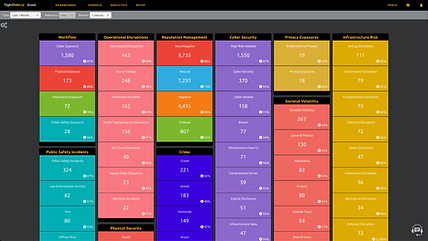
Public Safety Risk Taxonomy for Public Safety Intelligence
Overview of Public Safety Intelligence
Public Safety Intelligence involves the collection, analysis, and dissemination of information related to threats to public security, emergency situations, and safety risks that can impact communities and organizations. This discipline is crucial for protecting the public, managing emergencies, and ensuring the safety and well-being of populations in various environments.
Components of Public Safety Intelligence
Threat Assessment and Prevention
This component focuses on identifying and analyzing potential threats to public safety, including crime patterns, terrorism risks, and hazardous conditions.
Emergency Response Planning
This aspect involves developing and implementing strategies for rapid and effective response to various types of public safety incidents and emergencies.
Community Safety Analysis
This component deals with assessing ongoing safety concerns within communities and developing proactive measures to enhance overall public safety.
Importance of Public Safety Intelligence
Public Safety Intelligence is vital because it:
1. Protects Lives and Property
Public safety intelligence helps safeguard:
Community members from various threats and hazards
Critical infrastructure and public spaces
Private and public property from damage or loss
2. Enables Proactive Risk Mitigation
By providing insights into potential safety issues, it allows organizations to:
Implement preventive measures against identified threats
Develop targeted safety campaigns and educational programs
Allocate resources efficiently for maximum safety impact
3. Enhances Emergency Preparedness
Public safety intelligence contributes to preparedness by:
Informing emergency response plans and procedures
Guiding the development of multi-agency coordination systems
Supporting continuous improvement of incident management capabilities
4. Supports Law Enforcement and Security Operations
Public safety intelligence helps authorities:
Identify and respond to criminal activities more effectively
Coordinate efforts across different agencies and jurisdictions
Adapt strategies to evolving public safety challenges
5. Fosters Community Trust and Cooperation
By promoting transparency and effective safety measures, this intelligence supports:
Improved relationships between law enforcement and communities
Increased public participation in safety initiatives
Enhanced overall quality of life in communities
Sample Public Safety Event Types/Descriptions
1. Traffic Accident
Incidents involving vehicles on roadways, potentially causing:
Injuries or fatalities
Property damage
Traffic disruptions and secondary accidents
2. Fire
Uncontrolled burning that threatens:
Lives and property
Critical infrastructure
Natural resources and environments
3. 911 Call
Emergency calls reporting various incidents, including:
Medical emergencies
Crimes in progress
Accidents or disasters requiring immediate response
4. Officer Shot
Incidents involving law enforcement officers being wounded or killed, leading to:
Immediate danger to public and other officers
Heightened security measures and manhunts
Community tension and media scrutiny
5. Search/Rescue
Operations to locate and assist persons in distress, such as:
Lost hikers or outdoor enthusiasts
Victims of natural disasters
Missing persons in urban or rural environments
Sample Public Safety Article Titles
"Breaking: Major Multi-Vehicle Pileup Shuts Down Interstate, Dozens Injured"
"Massive Wildfire Threatens Suburban Communities, Evacuation Orders Issued"
"911 System Overwhelmed as Severe Storm Causes Widespread Damage"
"Officer Down: Manhunt Underway After Shooting at Routine Traffic Stop"
"Search and Rescue Teams Race Against Time to Find Missing Hikers in National Park"
Sample Courses of Public Safety Action/Recommendations
1. Immediate Incident Response
Dispatch appropriate emergency services to the scene
Establish incident command and control systems
Implement traffic management and crowd control measures
2. Public Alert and Communication
Activate emergency alert systems to inform the public
Provide clear, timely updates through various media channels
Establish a dedicated information hotline for inquiries
3. Resource Mobilization and Coordination
Activate mutual aid agreements for additional resources
Coordinate with relevant agencies and organizations
Mobilize specialized teams and equipment as needed
4. Scene Management and Investigation
Secure the incident scene and preserve evidence
Conduct preliminary investigations and witness interviews
Coordinate with forensic teams and specialists as required
5. Long-term Safety Enhancement
Analyze incident data to identify patterns and trends
Implement targeted safety improvement measures
Conduct public education and awareness campaigns